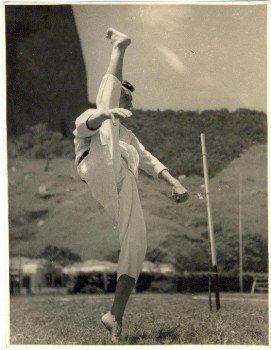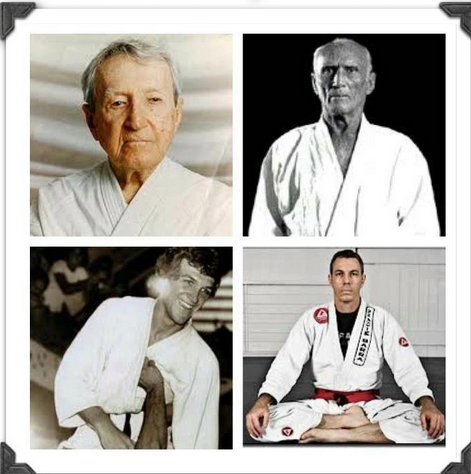Why Does Brazilian Jiu Jitsu Work?
The Founders of BJJ Focused on Developing Effective Techniques
The goal here is to provide an explanation to the question: “Why does Brazilian Jiu Jitsu work”? My answer to this question is: Brazilian Jiu Jitsu works because it is an exercise in somatic empiricism. While the last two words of the previous sentence might cause some readers to conclude that I’m intentionally trying to confuse them. I think that the usage of the phrase “somatic empiricism” is the most succinct way of conveying my explanation. According to Webster’s dictionary somatic refers to that which “pertains to the body”, while empiricism refers to “the doctrine that all knowledge is derived from experience.” So what I am basically saying is that Brazilian Jiu Jitsu works because it is the result of experiences relating to the body. This is a major departure from the practice of other martial arts that tend to be of a highly theoretical nature. The founders of Brazilian Jiu Jitsu focused their efforts on developing techniques that really worked and they tinkered with those techniques in order to increase the effectiveness of Brazilian Jiu Jitsu.
 Nassim Taleb, the author of “The Black Swan” refers to himself as a skeptical empiricist particularly regarding the validity of certain statistical applications and associated stories of causality. As such, he advises his readers “not to be suckers” don’t fall for nice stories; it’s better to rely on empiricism, which is knowledge based on experience. This relates to BJJ in that its founders were also skeptics and relied to a great extent on empirical knowledge. Webster’s defines a skeptic as a “person that questions the validity or authenticity of something purporting to be factual”. The founders of BJJ such as Carlos and Helio Gracie would say to other martial artists “I don’t think your style of fighting works, but if you think that it does then come here and beat me!” More often than not the founders were right. Yet, in the event that they encountered something that did work, then they had no qualms incorporating that technique into their repertoire. This was the case in Helio Gracie’s loss to Masahiko Kimura by a submission that is now called a “Kimura”.
Nassim Taleb, the author of “The Black Swan” refers to himself as a skeptical empiricist particularly regarding the validity of certain statistical applications and associated stories of causality. As such, he advises his readers “not to be suckers” don’t fall for nice stories; it’s better to rely on empiricism, which is knowledge based on experience. This relates to BJJ in that its founders were also skeptics and relied to a great extent on empirical knowledge. Webster’s defines a skeptic as a “person that questions the validity or authenticity of something purporting to be factual”. The founders of BJJ such as Carlos and Helio Gracie would say to other martial artists “I don’t think your style of fighting works, but if you think that it does then come here and beat me!” More often than not the founders were right. Yet, in the event that they encountered something that did work, then they had no qualms incorporating that technique into their repertoire. This was the case in Helio Gracie’s loss to Masahiko Kimura by a submission that is now called a “Kimura”.
Martial arts such as Kung Fu, Karate and others often involve narratives that include imaginary opponents and situations that can’t practically be simulated and understood. In contrast to this situation, BJJ can be conducted so that you actually practice submitting someone in the same manner that you would in a “real fight”. The primary difference being in BJJ training you respect the tap, where as in a real fight you might not respect the tap if your life depended on it. An experienced BJJ practitioner can be confident that a certain sweep or submission will work in a certain circumstance because he has been in that situation 1000 times and he successfully executed that move 800 times. The confidence gained from such experience is worth more than any hypothetical story, such as those routinely associated with other martial arts.
 The most robust systems tend to be those that evolve naturally over time. The efficacy of BJJ is a testament to that notion. Its evolution involved scraping those features which didn’t work and adding ones that did. What evolved was a refined and highly effective martial art that continues to evolve. This evolution did not occur through purely theoretical exercises, but rather by physical trial and error. This required and continues to require countless hours of tinkering. What we can take away from this is that we should not be afraid to try something; don’t be afraid to tap! This is the way we learn. We should stop thinking that we will either succeed or fail, but rather we succeed as a result of the knowledge we’ve gained from failure, because failure provides the biggest opportunity for learning! We should take a cue from the founders of BJJ and strive to be heroic tinkerers just like them.
The most robust systems tend to be those that evolve naturally over time. The efficacy of BJJ is a testament to that notion. Its evolution involved scraping those features which didn’t work and adding ones that did. What evolved was a refined and highly effective martial art that continues to evolve. This evolution did not occur through purely theoretical exercises, but rather by physical trial and error. This required and continues to require countless hours of tinkering. What we can take away from this is that we should not be afraid to try something; don’t be afraid to tap! This is the way we learn. We should stop thinking that we will either succeed or fail, but rather we succeed as a result of the knowledge we’ve gained from failure, because failure provides the biggest opportunity for learning! We should take a cue from the founders of BJJ and strive to be heroic tinkerers just like them.
______
Contributing Writer Luis Sandor
Blue Belt
Trains at Gracie Barra Hollywood under Alberto Crane

